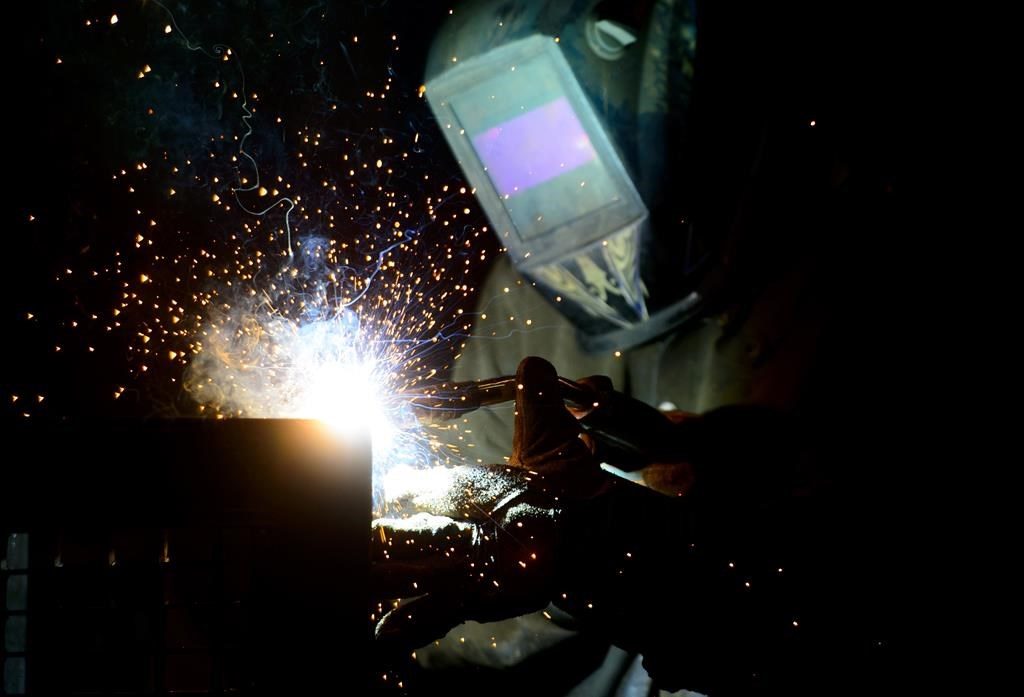Sandy shuts down northeast airports; travellers could be stuck for days
Posted Oct 31, 2012 04:45:38 AM.
This article is more than 5 years old.
Superstorm Sandy grounded more than 18,000 flights across the Northeast and the globe, and it will take days before travel gets back to normal.
According to the flight-tracking service FlightAware, more than 7,000 flights were cancelled on Tuesday alone. Delays rippled across the U.S., affecting travellers in cities from San Francisco to Atlanta. Some passengers attempting to fly out of Europe and Asia also were stuck.
Authorities closed the three big New York airports because of the storm. New York has the nation’s busiest airspace, so cancellations there can dramatically affect travel in other cities.
It was possible that John F. Kennedy airport would re-open for flights on Wednesday, according to the Port Authority of New York and New Jersey. It wasn’t known when the LaGuardia and Newark, N.J. airports would reopen.
Flying began to resume at other airports. Delta restarted flying from Boston and Washington Dulles and Reagan on Tuesday. Airline spokesman Morgan Durrant said it would resume domestic flights from JFK on Wednesday.
Service was slowly returning to Philadelphia International Airport on Tuesday afternoon.
Traffic from Asia to the East Coast was beginning to resume, with flights from Tokyo’s Narita International Airport to New York and to Washington, D.C., resuming as of Wednesday morning.
From Tokyo’s Haneda airport, the JAL/American Airlines flight to and from New York was cancelled.
Hong Kong’s Cathay Pacific, which cancelled seven flights to Kennedy airport through Wednesday, said service would resume Thursday.
South Korean airlines Korean Air and Asiana Airlines said they will resume normal service to East Coast cities starting late Wednesday or Thursday.
Travellers stuck overseas made the best of the delays they faced.
Peter and Sheryl Knight were scheduled to fly home to Washington from Hong Kong on Wednesday, but their Cathay Pacific Airways flight via New York’s Kennedy airport was cancelled. The airline put them on a flight for Chicago on Thursday, where they would board another flight home.
The delay gave them an extra day to enjoy Hong Kong, Knight said.
“We’re very anxious to get back and were very much hoping that the flight would be on time, but once we learned it was delayed and once we learned our delay would be only one day — Hong Kong’s not a bad place to be for another day,” said Knight.
Hurricane Sandy converged with a cold-weather system and slammed into New Jersey on Monday evening with 80 mph winds. The monstrous hybrid of rain and high wind — and even snow in some mountainous inland areas — has killed more than three dozen people in the U.S.
Airlines anticipated the storm’s impact and began cancelling flights on Saturday. By Tuesday they had scrapped more than 18,000.
In years past, airlines would have operated many of those flights — and left airplanes and crews stranded in the wrong cities when a blizzard or thunderstorm shut things down.
But airlines have gotten aggressive about cancelling because it makes restarting flights easier.
“It’s kind of like dominoes — when one aircraft is out of place, it means the flight crew is out of place, and that has a ripple effect throughout the rest of the day,” said Lance Sherry, who runs the Center for Air Transportation Systems Research at George Mason University.
The number of cancellations from Sandy was roughly on par with other major storms that airlines deal with. A major winter storm in early 2011 caused 14,000 cancellations over four days.
Airlines face a large task in getting things back to normal. Workers had to clear garbage and downed tree limbs from runways at JFK. Water was on the runway at LaGuardia, according to a letter from United CEO Jeff Smisek to workers. At one point, some airlines hoped to restart some New York flights by late Tuesday, but that idea went out the window right along with the travel plans of their passengers.
Flooded roads and closed subways will keep some workers from the airport. Reservations workers at other airports and at call centres are busy dealing with stranded passengers.
Some travellers hunkered down and waited, while others looked for a new way home.
Orbitz said car rates jumped 14 per cent in New York from last week. Rates jumped even higher in Boston and Washington, including a 50 per cent spike in Philadelphia.
Orbitz said hotel room rates rose 55 per cent in Newark, where cancellations accelerated earlier than other New York-area airports. They rose 9 per cent in one week in Washington, but fell 8 per cent in Boston and New York City.
Some travellers figured they could do better the further away they got from the coast.
Wedding photographer Josh Saran was in Washington D.C. to shoot a Saturday wedding. His Southwest flight home to Seattle was cancelled, so he rented a car and headed toward Columbus, Ohio. When snow closed the highway, he turned his rented Chevy Aveo toward Pittsburgh to catch a US Airways flight.
“I have a really loving and smart girlfriend in Seattle that sits in front of a computer and calls the airlines and sees where I can go,” he said.
Airline reservations systems are so complex that one department might cancel a flight even while a reservations worker is trying to shift a traveller onto that same flight, said Joe Brancatelli, a travel expert who runs a newsletter for business travellers.
Travellers don’t have any choice but to be patient, he said.
“Where are they gonna go? They hate United today, they go to Delta next week,” he said. “Delta screws them, they go to American, and then it’s a big circle.”
___
Associated Press reporters Elaine Kurtenbach in Tokyo, Youkyung Lee in Seoul and Kelvin Chan in Hong Kong contributed to this report.










